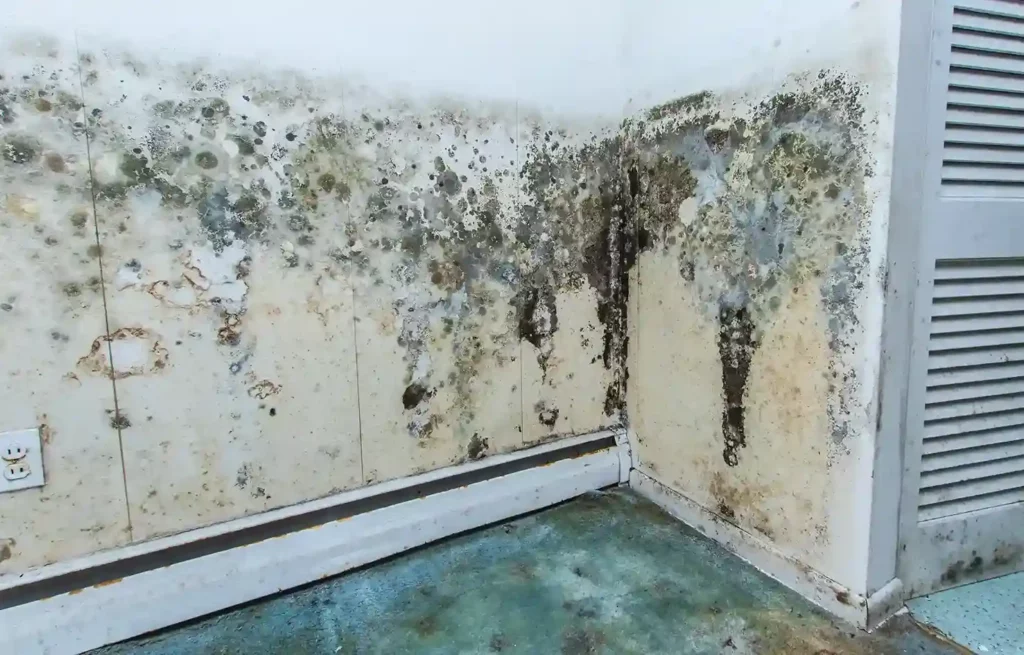The significance of indoor air quality (IAQ) cannot be overstated in maintaining a healthy indoor environment. Understanding the potential threats to IAQ becomes crucial as we breathe in the air within our homes and workplaces.
One such concern that demands our attention is the growth of mold in air ducts—an issue that extends beyond surface-level cleanliness and delves into the realm of scientific intricacies.
The introduction sets the stage by offering a brief overview of the broader importance of IAQ, emphasizing its direct impact on our well-being. Within this context, our focus narrows to the specific issue of mold growth in air ducts, a challenge that poses unique threats to both IAQ and the health of occupants.
The preview hints at the following scientific exploration, promising an in-depth analysis of the conditions that foster mold development and the preventive measures that can be undertaken.
Understanding Mold Growth in Air Ducts
Mold growth in air ducts is a complex issue that requires a nuanced understanding of the conditions that facilitate its development. This section delves into the science behind mold proliferation within ductwork, shedding light on the factors contributing to this unwelcome phenomenon.
Conditions Fostering Mold Growth: To comprehend the intricacies of mold growth in air ducts, it’s essential to explore the environmental conditions that act as catalysts. Moisture and humidity play pivotal roles, creating a breeding ground for mold to thrive. We’ll uncover how these factors, coupled with organic matter, form a perfect storm within the ductwork, providing an ideal habitat for mold colonies to take root.
Role of Moisture, Humidity, and Organic Matter: Moisture is a primary instigator in mold growth, and air ducts, with their dark and often damp interiors, become susceptible areas for this moisture to accumulate. Coupled with elevated humidity levels, especially in humid climates, the ductwork transforms into an environment conducive to mold proliferation.
Common Types of Molds in HVAC Systems: Not all molds are created equal, and certain types commonly find refuge in HVAC systems. We’ll introduce and explore these molds, discussing their characteristics and potential health implications. From the notorious Stachybotrys (black mold) to other varieties, understanding the diversity of molds that can inhabit air ducts is crucial for effective mitigation strategies.
Health Implications of Mold in Indoor Environments
Potential Health Risks: Mold spores, once airborne, can infiltrate living spaces and be inhaled by occupants. This inhalation poses potential health risks that extend beyond mere discomfort. We’ll explore how mold exposure can trigger allergic reactions, respiratory issues, and other health concerns.
From mild symptoms like nasal congestion to more severe conditions, understanding the spectrum of health risks is crucial for informed decision-making.
Symptoms and Health Conditions: To paint a comprehensive picture, we’ll discuss the range of symptoms and health conditions linked to mold inhalation. Respiratory symptoms, such as coughing and wheezing, are common, but we’ll also delve into less obvious indicators, including skin irritation and headaches.
Additionally, individuals with pre-existing respiratory conditions or compromised immune systems may face heightened risks, emphasizing the importance of addressing mold growth in indoor environments.
Importance of Addressing Mold Growth: The health implications underscore the critical need to promptly address mold growth in air ducts.
Prolonged exposure can lead to chronic health issues, exacerbating respiratory conditions and impacting overall well-being. This section emphasizes the proactive measures necessary to mitigate health risks, advocating for a comprehensive approach encompassing prevention and remediation strategies.
The Relationship Between HVAC Systems and Mold
Understanding the intricate relationship between HVAC systems and mold growth is essential for devising effective strategies to combat this pervasive issue.
This section explores how HVAC systems contribute to the circulation of mold, examining how mold spores can be distributed through air ducts and the connection between dirty ducts and mold proliferation.
HVAC systems, designed to regulate indoor temperature and air quality, can inadvertently become conduits for mold circulation. We’ll delve into how these systems, if not adequately maintained, can contribute to the spread of mold spores. From the air intake process to the distribution of conditioned air, every aspect of HVAC functionality plays a role in the potential dissemination of mold throughout indoor spaces.
Air ducts, a crucial component of HVAC systems, serve as both the arteries and potential breeding grounds for mold. This section will discuss how mold spores, propelled by the airflow within ducts, can settle and proliferate.
The interconnected nature of ductwork allows for the seamless transfer of mold, highlighting the importance of maintaining clean and sanitized air ducts to prevent the spread of contaminants.
Dirty, neglected ducts provide an ideal environment for mold to thrive. Accumulated dust, debris, and organic matter create the perfect breeding ground for mold colonies. We’ll explore how the neglect of routine air duct cleaning can amplify mold proliferation, emphasizing the importance of regular maintenance to break the cycle of mold circulation within HVAC systems.
Scientific Studies on Mold in Air Ducts
Scientific investigations often involve controlled experiments and comprehensive case studies that simulate real-world conditions. Researchers can identify the environmental factors contributing to mold proliferation within air ducts through meticulous observation and analysis. These studies highlight the conditions conducive to mold growth and provide a foundation for developing effective preventive measures and remediation strategies.
Case studies offer a closer look at real-life scenarios, showcasing instances where mold has thrived within air ducts and the subsequent impact on indoor air quality. These documented cases serve as cautionary tales, emphasizing the importance of proactive measures to address mold growth before it reaches problematic levels.
Critical insights from scientific studies delve into the types of molds prevalent in air ducts, the role of moisture and organic matter in mold development, and the effectiveness of various mold remediation techniques. By grounding our understanding in scientific research, we gain a comprehensive view of the science behind mold in air ducts, empowering us to make informed decisions for effective mold prevention and remediation.
Preventive Measures Against Mold Growth
Mitigating the risk of mold growth in air ducts involves adopting proactive measures to create an inhospitable environment for mold colonies. This section outlines preventive strategies that homeowners and businesses can implement to minimize the conditions conducive to mold proliferation within ductwork.
Preventing mold growth starts with vigilant maintenance and a proactive approach. We’ll explore measures such as regular inspections of air ducts to identify early signs of moisture or contamination. By addressing issues promptly, homeowners can disrupt the conditions necessary for mold to take hold, mitigating the risk before it becomes a significant concern.
Regular maintenance and inspections are fundamental components of mold prevention. This involves scheduling routine checks of air ducts to ensure they are free from debris, dust, and any potential sources of moisture. Professional inspections conducted by certified air duct cleaning experts can comprehensively assess the ductwork, identifying and rectifying issues before they escalate.
Controlling moisture levels in ductwork is a crucial aspect of mold prevention.
This can be achieved by promptly addressing leaks or water infiltration and ensuring proper ventilation. Additionally, improving the overall ventilation of the indoor space can contribute to maintaining optimal humidity levels, reducing the likelihood of mold growth.
Conclusion
In conclusion, our exploration into the intricacies of mold growth in air ducts has shed light on the multifaceted nature of this challenge. From understanding the conditions fostering mold development to unraveling the health implications and exploring the relationship between HVAC systems and mold, our journey has provided valuable insights for homeowners and businesses alike.
The scientific studies on mold in air ducts have been instrumental in deepening our understanding of the mechanisms at play.
Case studies and experiments have offered a closer look at real-world scenarios, emphasizing the need for proactive measures to address mold growth before it compromises indoor air quality.
Preventive measures are vital to maintaining clean and mold-free air ducts. By adopting a proactive approach through regular inspections, timely maintenance, and controlling moisture levels, individuals can create an environment that minimizes the risk of mold proliferation. Professional inspections further contribute to a comprehensive strategy for mold prevention, ensuring a thorough assessment of ductwork.
As we navigate the complexities of mold growth in air ducts, it becomes evident that knowledge and action go hand in hand. Armed with insights from scientific studies and a commitment to preventive measures, homeowners and businesses can foster environments that prioritize clean air and the well-being of occupants.
In the face of mold challenges, the journey doesn’t end but evolves into a continuous effort to maintain optimal indoor air quality.
This exploration guides those seeking to understand, prevent, and address mold growth in air ducts, ultimately contributing to healthier living and working spaces for everyone.













